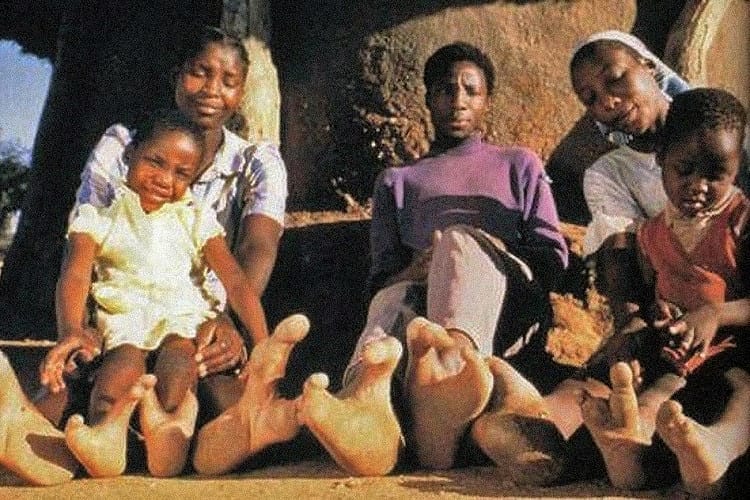
 The Vadoma people reside in the Kayemba region in the north of Zimbabwe. They are very famous for their “ostrich foot syndrome”, which is more scientifically referred to as “Ectrodactyly”. Ectrodactyly is a genetic condition that affects a substantial minority of their population.
The Vadoma people reside in the Kayemba region in the north of Zimbabwe. They are very famous for their “ostrich foot syndrome”, which is more scientifically referred to as “Ectrodactyly”. Ectrodactyly is a genetic condition that affects a substantial minority of their population.
Ectrodactyly, otherwise known as “lobster claw syndrome” or “two-toed”, usually affects the legs and hands. This syndrome occurs when one or more toes or fingers are absent at birth. The three middle toes are absent, while the two outer ones are turned in. Amongst the Vadoma people, Ectrodactyly is an unusual condition that has been passed down from one generation to the next.

Vadoma people live an isolated lifestyle
Many inhabitants of the Vadoma community can hardly wear shoes due to the shape of their toes. They have two big toes on each foot. However, even with the two-toe feature, the people can climb trees. They only experience slight difficulty when running.
The Vadoma people have so much pride in themselves and believe that they are superior to other tribesmen. They are well known for their physical peculiarity and are mostly nomads who engage in hunting, fishing and gathering of fruits. However, the crackdown on poaching and threat by game rangers have made more Vadoma tribesmen abandon their hunter-gatherer lifestyle and move to the lowlands.
It is forbidden for Vadoma indigenes to marry outside their tribe. This tribal law was put in place so that other tribes do not begin to exhibit the two-toed body feature. Due to the isolation of this tribe, they have retained their unique feature within their indigenes. This may explain why the ostrich foot syndrome happens frequently with their offspring.
Apart from the restrictive marriage culture, the vadoma people can freely mix and relate with other members of the community. Their condition is not seen as a form of disability and it doesn’t stop them from being productive.
Source: TalkAfricana.com

More importantly, to stay updated with the latest news, health updates, happenings, and interesting stories, visit thescopermedia.com








